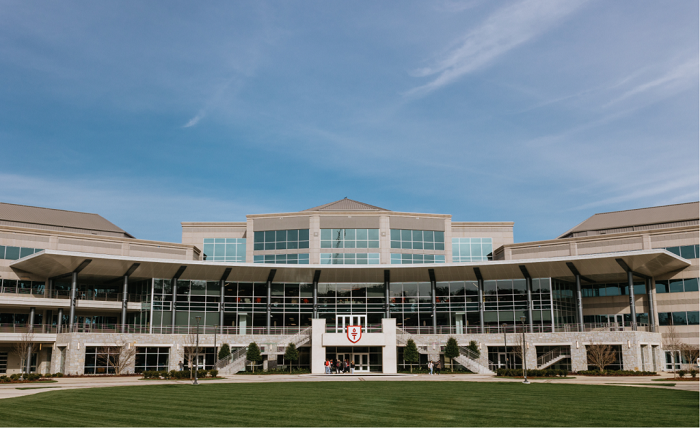Church of the Highlands Exposed: The Rise and Fall of Alabama’s Megachurch

Birmingham, Alabama, is home to the nondenominational Christian megachurch Church of the Highlands. With over 50,000 members spread over 22 campuses around the state, it was established by Pastor Chris Hodges in 2001 and has since expanded to rank among the biggest and most significant churches in the country. But the church has recently been the target of several disputes and accusations that have damaged its standing and cast doubt on its survival. I will discuss the ups and downs of the Church of the Highlands, looking at the elements that made it succeed and fail and the effects it had on the community and the church.
The Rise of the Church of the Highlands
In 2001, a small group of 34 individuals convened in a Mountain Brook High School auditorium that was rented to form the Church of the Highlands. Hodges oversaw the church’s transition to a modern, approachable worship style that included a variety of praise bands, a relaxed dress code, and insightful lectures. The church also adopted a multi-site concept, opening new locations around Alabama and delivering Hodges’ sermons live via video. The church made a social outreach investment as well, collaborating with neighborhood groups to assist the impoverished, the homeless, the addicts, and the prisoners.
The church’s approach was successful, drawing thousands of attendees of various races, ages, and socioeconomic backgrounds. The church gained recognition for its thriving and multicultural membership, its thought-provoking and applicable sermons, and its giving and caring ministry. Other churches and leaders began to acknowledge and appreciate the church as well, wanting to pick up tips and ideas from its best practices. In the American evangelical movement, the church was almost universally recognized as a leader and role model.

The Fall of Church of the Highlands
However, the church’s success also brought challenges and criticisms, both from within and without. Some of the issues that the church faced include:
- Doctrinal issues: Some opponents charged that the church’s doctrines lacked biblical authenticity and were overly superficial and shallow. They asserted that the church prioritized marketing and entertainment over teaching and discipleship. In addition, they questioned the church’s membership in the Association of Related Congregations (ARC), a network of congregations under fire for endorsing charismatic and prosperous gospel ministries.
- Financial accountability and transparency: A few of the church’s detractors said that it lacked both, particularly when it came to its multimillion-dollar construction projects and its funding of ARC. They said that in addition to not disclosing its earnings and outlays, the church disallowed outside scrutiny or independent audits. They said that the church was not following the biblical command to be faithful stewards of God’s resources and that it was mismanaging and abusing its finances.
- Leadership disputes: A few detractors drew attention to the church’s centralized, hierarchical structure, pointing out that Hodges possessed an excessive amount of authority and control over the organization. They said that the church lacked democratic and participatory procedures for decision-making and governance, as well as checks and balances. In addition, they accused Hodges of being aggressive and dictatorial, as well as stifling and rejecting opposing viewpoints.
- Concerns about diversity and inclusivity: A few opponents disputed the church’s assertions of diversity and inclusivity, particularly concerning social and racial justice. They said that the church did not adequately represent the variety and needs of the surrounding community because it was predominately made up of white, wealthy people. Additionally, they charged that the church failed to show solidarity with the downtrodden and marginalized and was callous and oblivious to the problems of racism and oppression.
- The church’s problems: Reached a breaking point in 2020 when Hodges was revealed to have liked statements on social media made by notorious conservative activist Charlie Kirk, who founded Turning Point USA, an organization that has been charged with advancing bigotry and racial supremacy. Many individuals were outraged and retaliated after learning about the news, particularly members of the African American community who thought that Hodges had abandoned and insulted them. As a result, the church lost its affiliations with some public housing complexes and schools, where it had been offering social services and mentorship. Some of the church’s current and former members also staged protests and boycotts, calling for Hodges to step down or provide an apology.
The Response and Reactions of the Church of the Highlands
- Hodges apologized in public for his actions, acknowledging that he had erred and injured a great number of individuals in the wake of the scandal. He said that he had unfollowed Kirk on social media and that he disagreed with his opinions. In addition, he reaffirmed his commitment to racial justice and healing and said that he would engage in a process of listening to and learning from the African American community. He also established a diversity team with an African American pastor in charge to help the church address its inclusion and diversity issues.
- Nevertheless, some of Hodges’ detractors persisted in doubting his honesty and integrity, and his apologies and acts were unable to win them over. They contended that Hodges’ measures were too little, too late, and that they failed to address the underlying issues and structural issues facing the church. In addition, they asked that Hodges alter the organization and rules of the church or take more drastic and tangible actions, including resigning from his post. Along with increased engagement and representation from the African American community, they demanded greater responsibility and openness from the church.
- Supporters of Hodges, on the other hand, stood up for him and the church, saying he was a victim of political correctness and culture. They contended that Hodges was an upright and Christian man who had contributed greatly to the community and the church. They said that the church was a warm and inviting environment that had a significant and beneficial influence on a lot of people’s lives. Along with pleading for harmony and peace inside the church, they also asked for grace and forgiveness.
The Impact and Implications of the Church of the Highlands
The controversy surrounding the Church of the Highlands has had a significant impact and implications for the church and its community, both positive and negative. Some of the effects include:
- The church has lost a little bit of its internal and external credibility. Because of their dissatisfaction and disillusionment with the church’s actions and beliefs, a number of its associates and members have either left or split from it. Some of its opponents and detractors have intensified their attacks and accusations because they feel that its inadequacies and failings are justified and verified. Not only has the church’s standing and influence declined, but attendance and donations have also decreased.
- Possibility for reflection and change: The church now has the opportunity to reflect and change both individually and collectively. Certain leaders and members of the group have taken the time and trouble to examine their hearts and minds, acknowledge their transgressions, and modify their thoughts and actions. Critics and proponents of the religion have exchanged views, offered assistance, and shown their willingness to collaborate. The church has also begun a dialogue and action process to address its issues and challenges and improve its rules and procedures.
- The church has been a societal and individual catalyst for growth and transformation. It is a force for development and change. Certain followers and participants have mentioned feeling a refreshed feeling of direction and goal, along with fortifying and improving their faith and bond with God. Certain of its organizations and networks have shown signs of increased action and a sense of accountability, along with a stronger understanding and appreciation of diversity and fairness. The church has also sparked a movement of hope and healing to get over its wounds and divisions and realize its goals and vision.
The Future and Prospects of the Church of the Highlands
- The future and prospects: Of the Church of the Highlands are uncertain and unpredictable, depending on how the church and its community respond and react to the current situation and the emerging opportunities. Some of the possibilities include
- A decline and eventual demise: If the church doesn’t deal with and resolve its difficulties, it can keep declining and eventually die, losing the support of the community and its people. More disagreements, crises, losses, and damages might befall the church, which could ultimately cause it to fail and close.
- Restoration and recovery: If the church can confront and resolve its difficulties and concerns, as well as reclaim its relevance and appeal to its members and society, it may also experience restoration and recovery. Church rebirth and renewal may finally result from its ability to resolve its disputes and crises and repair its losses and damages.
- Transformation and innovation: If the church produces and effectively communicates its relevance and appeal to its members and society, as well as accepts and leverages its challenges and difficulties, it too may transform and innovate. In the end, the church may innovate and alter itself by overcoming its disputes and crises and profiting from its losses and harms.
Conclusion
The Church of the Highlands is a church that has seen development and fall, as well as success and failure, acclaim and condemnation. It is a church that has shown its vulnerabilities as well as its advantages and disadvantages, as well as its hopes and anxieties. Numerous individuals, both inside and outside the church, have found inspiration and challenge in this church. This church has a great deal to teach and impart to the world as well as to itself. The church is currently in the process of realizing its calling from God. I sincerely hope you have a fantastic day, and thank you for reading my blog article.
FAQs:
- What caused the Church of the Highlands problems and accusations?
Reports of misbehavior, financial wrongdoing, and internal conflict within the Church of the Highlands were the initial causes of the accusations and controversies surrounding the organization. A public uproar and extensive examination followed these findings.
- What reactions have the disclosures elicited from churchgoers and supporters?
The discoveries have shocked, dismayed, and betrayed church members and supporters. A lot of people have voiced their dissatisfaction and demanded accountability and openness from church leadership.
- How has the Church of the Highlands addressed the disputes?
To resolve the disputes, the Church of the Highlands has undertaken internal investigations, put changes into place, and extended an apology for any transgressions. Some opponents counter that, to solve structural faults inside the organization, more decisive action is required.
- What effect has the Church of the Highlands scandal had on the organization’s standing among evangelicals?
Due to the Church of the Highlands scandal, evangelicals are beginning to have doubts about its moral character and leadership. While some have cut ties with the church, others have stayed faithful despite the disputes.
- What lessons may be drawn from the controversy surrounding the Church of the Highlands?
The controversy surrounding the Church of the Highlands serves as a timely reminder of the value of ethical leadership, accountability, and openness in religious institutions. It emphasizes how important it is to keep an eye out and scrutinize religious communities to make sure they stick to their core beliefs.




